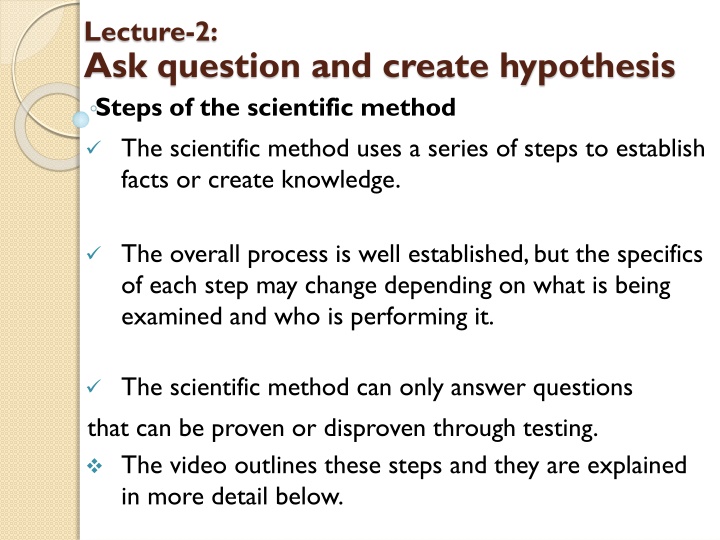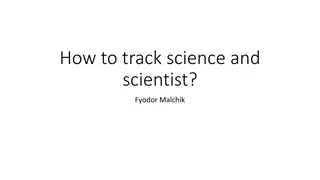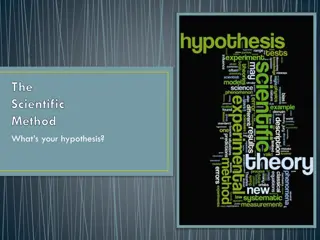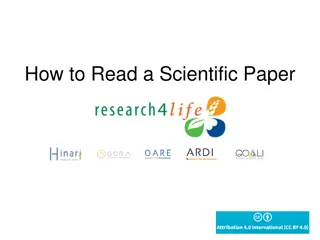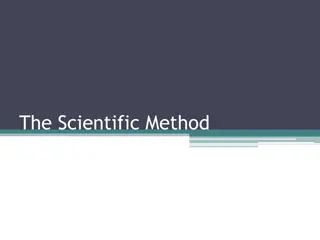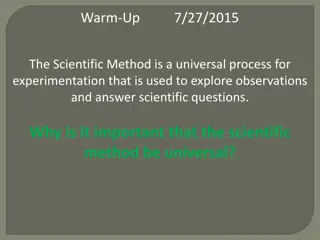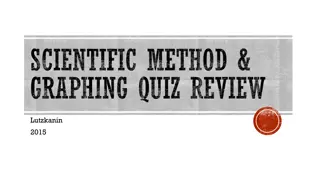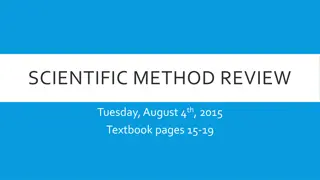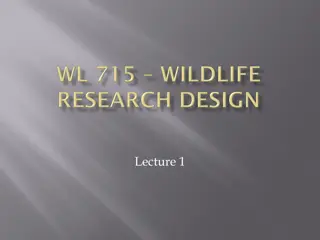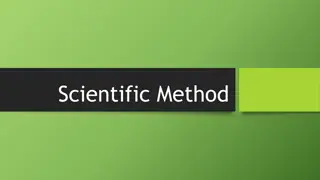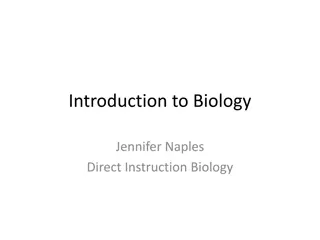Steps of the Scientific Method for Inquiring Minds
The scientific method is a structured approach to gaining knowledge through observation, questioning, research, and hypothesis formation. By following specific steps like making observations, asking questions, gathering information, and creating hypotheses, scientists aim to establish facts and understand phenomena. This process is integral to scientific inquiry, enabling the testing of ideas and theories to expand our understanding of the world around us.
Download Presentation

Please find below an Image/Link to download the presentation.
The content on the website is provided AS IS for your information and personal use only. It may not be sold, licensed, or shared on other websites without obtaining consent from the author.If you encounter any issues during the download, it is possible that the publisher has removed the file from their server.
You are allowed to download the files provided on this website for personal or commercial use, subject to the condition that they are used lawfully. All files are the property of their respective owners.
The content on the website is provided AS IS for your information and personal use only. It may not be sold, licensed, or shared on other websites without obtaining consent from the author.
E N D
Presentation Transcript
Lecture-2: Ask question and create hypothesis Steps of the scientific method The scientific method uses a series of steps to establish facts or create knowledge. The overall process is well established, but the specifics of each step may change depending on what is being examined and who is performing it. The scientific method can only answer questions that can be proven or disproven through testing. The video outlines these steps and they are explained in more detail below.
Make an observation or ask a question. The first step is to observe something that you would like to learn about or ask a question that you would like answered. These can be specific or general. Some examples would be "I read that hydroxychloroquine was banned from COVID-19 patients because it causes an increase in heart rate". For this observation the question could be does the hydroxychloroquine have an impact on heart? How or why? Taking the time to establish a well-defined question will help you in later steps.
Practice section: See the video and ask a question about any phenomena you noticed.
Gather background information This involves doing research into what is already known about the topic. This can also involve finding if anyone has already asked the same question. Create a hypothesis A hypothesis is an explanation for the observation or question. If proven later, it can become a fact. Compared to our last example, it would be "the hydroxychloroquine effect on CK-MB or acetylcholine levels in plasma and heart tissue of the normal mice".
Practice section See the video and create a hypothesis depend on your question.
